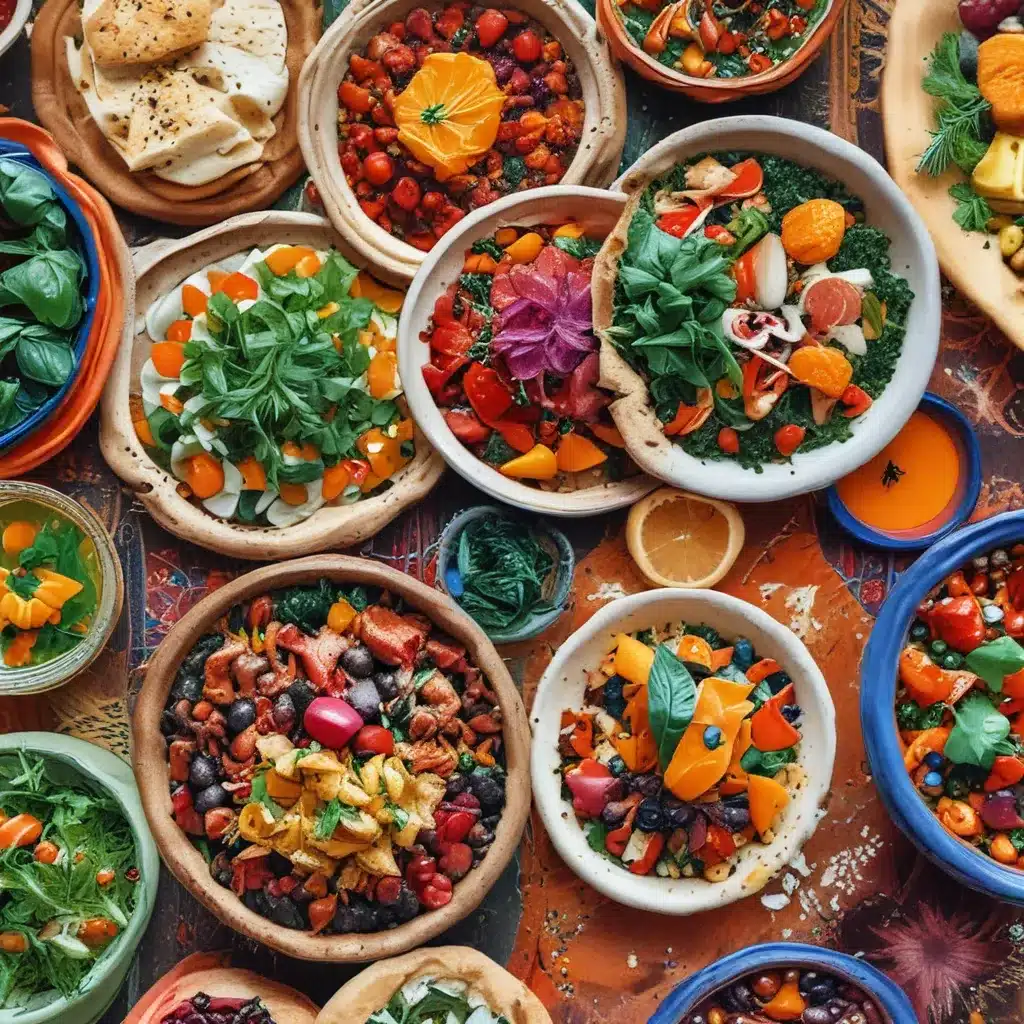
A Culinary Journey into the Heart of Moroccan Cuisine
It all began with a trip to Morocco – a vibrant, enchanting country that would forever change my perception of salads. As I stepped off the plane in Fes, I was immediately struck by the kaleidoscope of colors and aromas that surrounded me. The bustling medina, the towering minarets, the fragrant spice markets – it was a feast for the senses.
But it was the Moroccan salads that truly captivated me. Served alongside almost every meal, these vibrant dishes were a far cry from the limp, uninspired salads I was used to. Each one was a masterpiece, a symphony of flavors and textures that danced on the palate.
Mark Bittman captures it perfectly when he reflects on his time in Morocco: “The Moroccan salads served with almost every meal and usually featuring eggplant, tomatoes, bell peppers, sometimes beets, onions and more suddenly had zing.”
Discovering the Magic of Moroccan Salads
As I wandered the winding streets of Fes, I couldn’t help but be drawn to the colorful displays of produce in the local markets. Vibrant red tomatoes, deep purple eggplants, and golden-hued squash all begged to be transformed into something extraordinary.
And that’s exactly what the Moroccan cooks did. In restaurant after restaurant, I was presented with salads that were not merely an afterthought, but the star of the show. Eggplant and tomatoes were roasted to perfection, their flavors intensified by the scorching Moroccan sun. Crisp, thinly sliced bell peppers added a satisfying crunch, while shredded beets and onions lent their earthy sweetness to the mix.
El Bahia, the renowned Moroccan restaurant in New York City, captures this spirit beautifully in their salads. Each dish is a celebration of the season’s bounty, showcasing the vibrant colors and bold flavors that define Moroccan cuisine.
Textures That Tantalize the Senses
But it wasn’t just the flavors that captivated me – it was the incredible textures of these Moroccan salads. Gone were the days of soggy, limp greens. Instead, I encountered salads with a satisfying crunch, each ingredient perfectly cooked to bring out its unique texture.
Mark Bittman explains this phenomenon, noting that in Moroccan cuisine, “vegetables are cooked until quite soft—none of this crisp-tender business—and commonly served at room temperature.”
This approach allows the individual ingredients to shine, creating a harmonious blend of soft, tender elements and crunchy, vibrant components. The roasted eggplant and bell peppers melted in my mouth, while the shredded beets and raw onions provided a satisfying textural contrast.
And let’s not forget the star of the show – the humble tomato. In the scorching Moroccan sun, these juicy fruits transformed into something truly extraordinary. Their natural acidity and sweetness were amplified, creating a dazzling flavor profile that needed no additional dressing.
A Feast for the Senses
As I sat at a small, unassuming restaurant in the heart of Fes, savoring each bite of the Moroccan salad before me, I was struck by the sheer sensory experience. The vibrant hues of the vegetables, the earthy aromas that wafted from the dish, the satisfying crunch and the burst of flavor – it was a revelation.
This was no ordinary salad. This was a work of art, a testament to the culinary prowess of the Moroccan people. And as I sipped on a refreshing glass of mint tea, I realized that these salads were more than just a side dish – they were a window into the rich cultural heritage of Morocco.
Gluten Free Chow captures the essence of Moroccan salads perfectly, describing them as “a fusion of robust flavors, textures, and colors that hits all of the right notes – sweet, salty, spicy, and crunchy.”
The Art of Moroccan Salad-Making
Of course, recreating the magic of Moroccan salads at home is no easy feat. It requires a deep understanding of the interplay of flavors and textures, as well as a keen eye for presentation.
But the team at El Bahia has mastered the art, elevating the humble salad into a culinary masterpiece. From the vibrant Carrot and Fennel Salad, bursting with citrus notes and a satisfying crunch, to the earthy, roasted Beet and Lentil Salad, each dish is a testament to the skill and creativity of the Moroccan culinary tradition.
And it’s not just the flavors and textures that make these salads so special – it’s the care and attention to detail that goes into their preparation. As Not Without Salt notes, “the vegetables are cooked until quite soft—none of this crisp-tender business—and commonly served at room temperature.”
This approach allows the natural sweetness and acidity of the ingredients to shine, creating a balanced and harmonious dish that delights the senses. And the addition of fragrant herbs, tangy dressings, and crunchy toppings elevates these salads to a level of sophistication that is truly unparalleled.
A Taste of Morocco, Right in New York City
As I sit here, reflecting on my time in Morocco, I can’t help but feel a sense of longing. The vibrant colors, the bold flavors, the satisfying textures – it’s all so far away, yet so close.
But then I remember El Bahia, the Moroccan oasis in the heart of New York City. With each bite of their expertly crafted salads, I’m transported back to the bustling streets of Fes, the aroma of spices wafting through the air, and the warmth of the Moroccan sun on my face.
It’s a taste of Morocco, right here in the Big Apple. And for those of us who can’t hop on a plane to Marrakech, it’s the next best thing. So why not indulge in the vibrant colors and textures of Moroccan salads today? Your taste buds will thank you.


